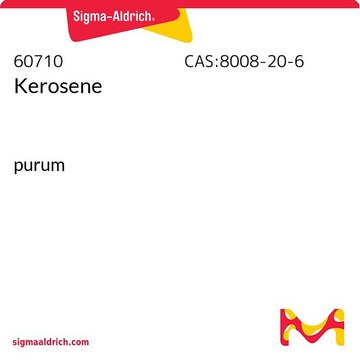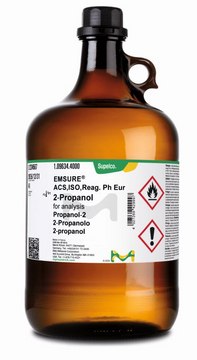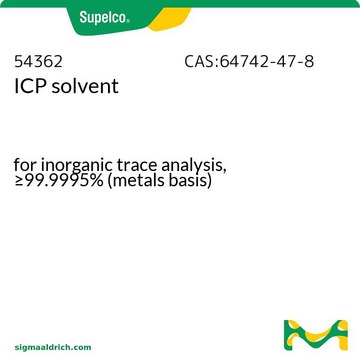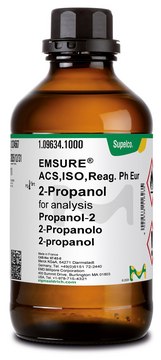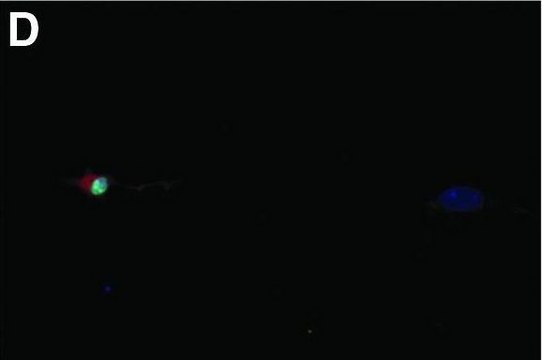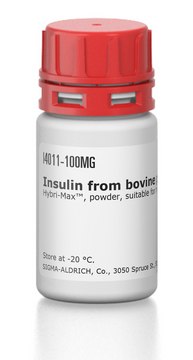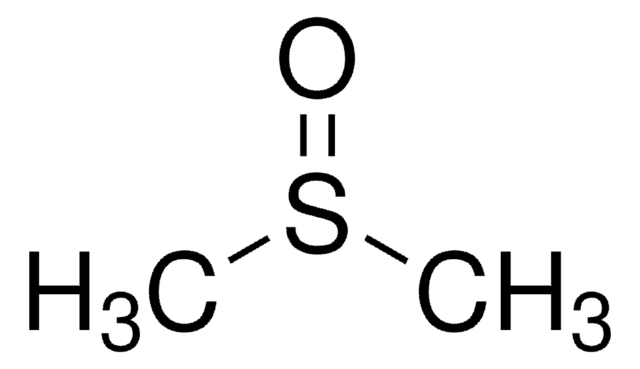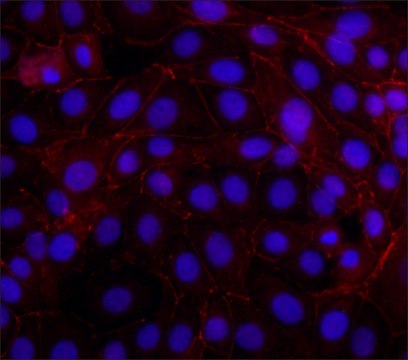About This Item
Recommended Products
grade
reagent grade
Quality Level
vapor density
4.5 (vs air)
vapor pressure
0.23 mmHg ( 20 °C)
form
liquid
autoignition temp.
442 °F
expl. lim.
5 %
bp
190-250 °C (lit.)
density
0.8 g/mL at 25 °C (lit.)
Looking for similar products? Visit Product Comparison Guide
General description
Application
- As a fuel in the preparation of kerosene–alumina nanofluid.
- In the preparation of carbon nanoparticles (CNPs) by an incomplete combustion method.
- In the synthesis of wrinkled graphene nanostructures by thermal decomposition followed by modified Hummers′ method.
Features and Benefits
- High density
- High enthalpy
- Easy storage
Quantity
18.9 L = 5 gal
Signal Word
Danger
Hazard Statements
Precautionary Statements
Hazard Classifications
Aquatic Chronic 2 - Asp. Tox. 1 - Skin Irrit. 2 - STOT SE 3
Target Organs
Central nervous system
Storage Class Code
3 - Flammable liquids
WGK
WGK 2
Flash Point(F)
179.6 °F - closed cup
Flash Point(C)
82 °C - closed cup
Regulatory Information
Choose from one of the most recent versions:
Already Own This Product?
Find documentation for the products that you have recently purchased in the Document Library.
Protocols
Accurately measure moisture content in kerosene through Karl Fischer titration, using both volumetric and coulometric methods for reliable results.
Our team of scientists has experience in all areas of research including Life Science, Material Science, Chemical Synthesis, Chromatography, Analytical and many others.
Contact Technical Service